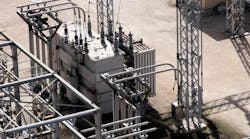Data will newly empower utilities and help them steer their future businesses, even while the sector continues to consolidate, says Rodger Smith, senior vice president and general manager for Oracle's Utilities Global Business Unit. Smith and utility sector senior executives recently met with The Energy Times for a wide-ranging conversation sponsored by Oracle.
ENERGY TIMES: How do you view industry consolidation?
SMITH: When I started in this business 30 years ago, there were about 125 investor owned utilities. We have now dropped below 60. Based on everything I know and the customers that we have, I think it will halve again in the next 10 years. The biggest driver is all the capital investment that has to be made.
ENERGY TIMES: Where are we headed in data management?
ENERGY TIMES: What do you think of Nest – and the future of meters?
SMITH: I think the Nest fills the gap for the most affluent customers because the thermostats are $270 apiece. Ten years from now the meter’s going to look like a dinosaur to most people. Honestly. You’re going to have sensors in your appliances and everything else. You’re going to have an aggregation device that pumps information out to vendors and to the utility. It’s going to allow you to customize how you supply customers on a customer by customer basis almost. The device allows you to help manage data. The question is what role does the utility play in that. If I really want to stay close to my customer, how do I control those particular devices? It’s not expensive technology. Sensor technology we’ve had in printers for years costs less than a quarter. There will be fewer utilities. Ultimately technology will make things easier for customers and allow them to have more flexible rates. Regulators need to catch up with and allow the utilities to explore some things that are available to them.
Read more of this series of articles:



